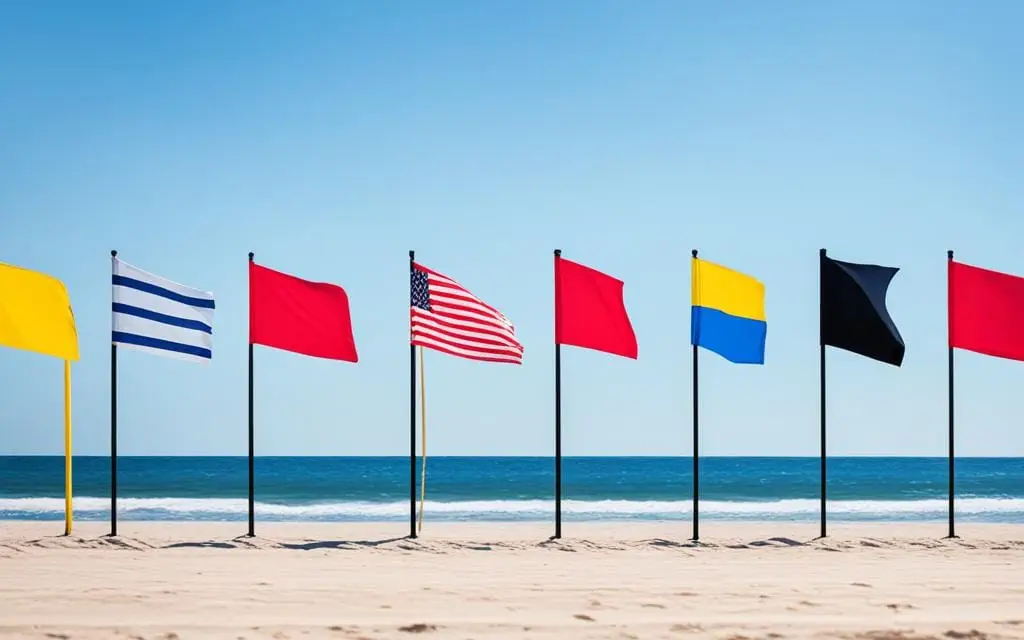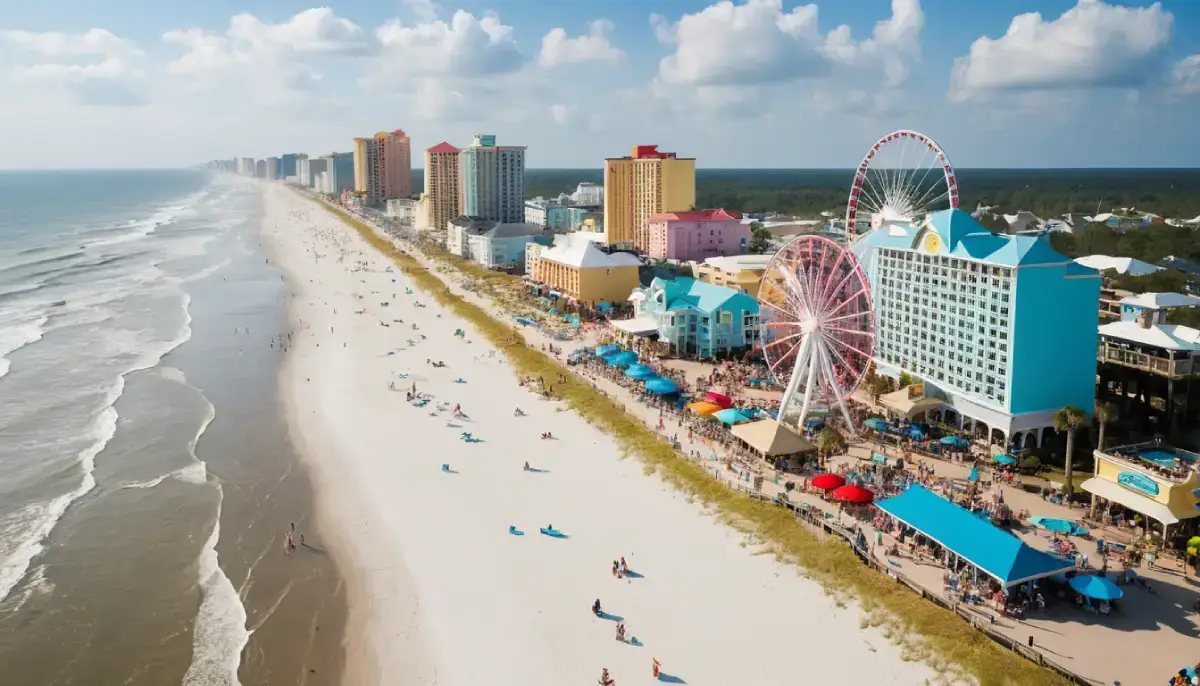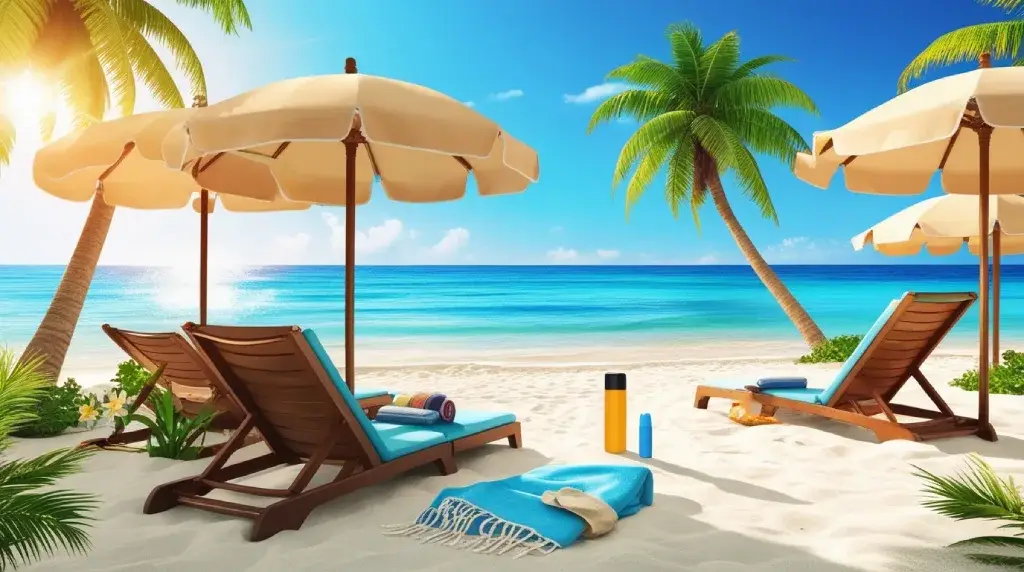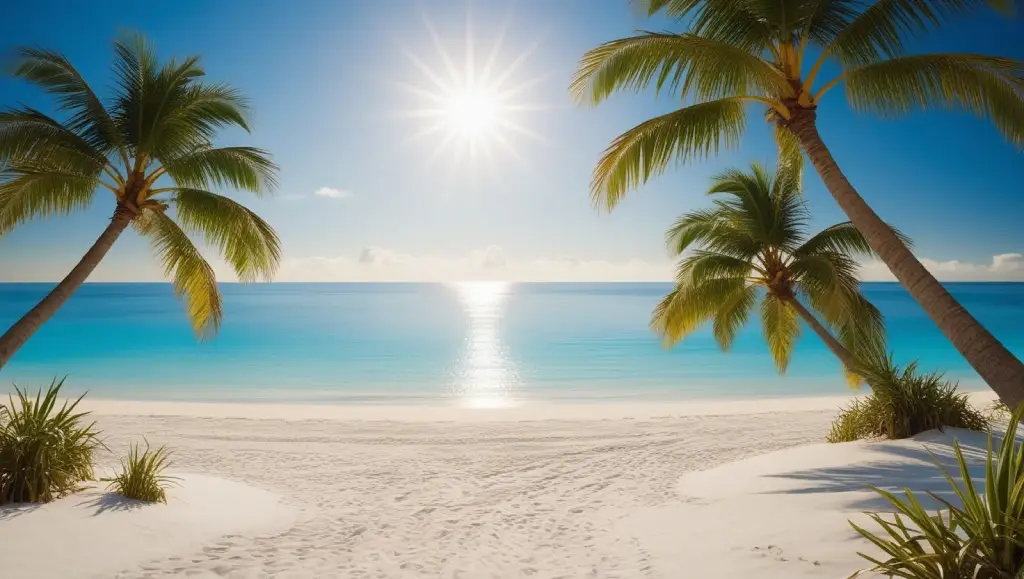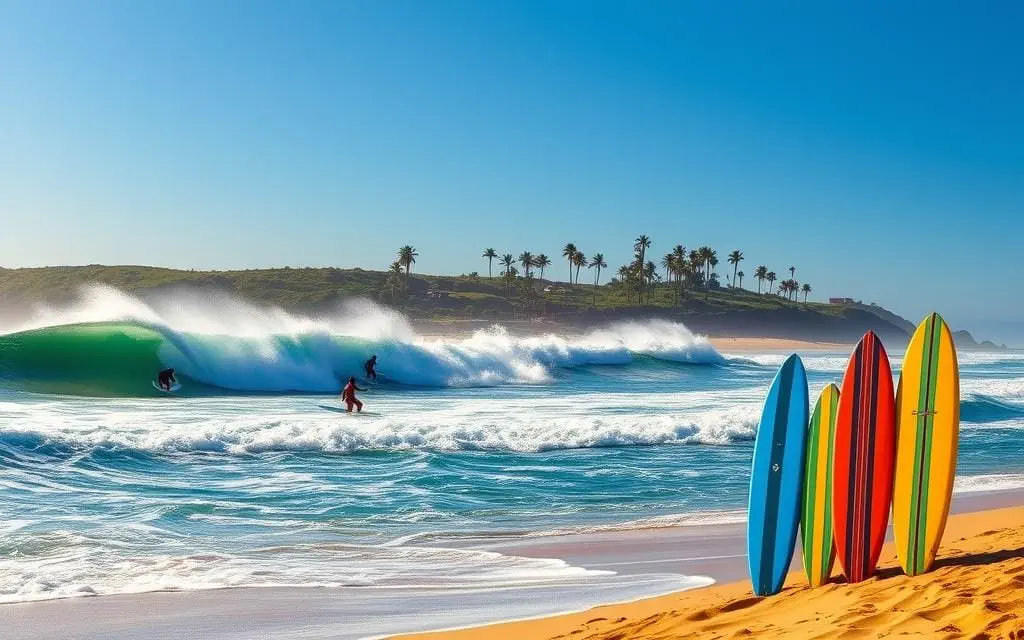When we go to the beach, we see various colored flags blowing in the wind. Each flag gives us info on the surf and any dangers. Knowing what these flags mean helps keep us safe. Today, we will look into what a black flag means and how to stay safe at the beach.
At the beach, flags come in many colors. Green means calm waters, yellow means some currents, and red warns of high waves or strong pull. But, what is the significance of a black flag? It’s a very serious sign. When the black flag flies, it means the water is off-limits. This is because it’s too dangerous to swim, with threats like big waves, rip currents, and undertows.
To stay safe at the beach, always check the flag colors and listen to lifeguards. Knowing about the beach flags and the black flag’s meaning is key. This way, we can have fun at the beach while staying safe.
Table of Contents
ToggleUnderstanding Beach Warning Flag Systems
Beach warning flags help people know if it’s safe to go in the water. They use different colors to warn about surf conditions and dangers. This makes it easy for everyone to decide what to do at the beach.
Colors and Meanings Explained
The main colors you’ll see on beach warning flags are:
- Green flag: Calm conditions, low hazard
- Yellow flag: Moderate surf or currents, use caution
- Red flag: High surf or strong currents, swimming not recommended
- Double red flags: Water closed to the public, high hazard
Why Beach Safety is Crucial
It’s super important to know what these flags mean. They keep us safe from things like rip currents and big waves. If you ignore the warning flags, you could get badly hurt or even die.
Understanding the colors on the beach warning flags helps us have a good time safely. Listen to the lifeguards and you should have a great, safe day at the beach. It’s all about being aware and making smart choices.
What Does a Black Flag Mean at the Beach
The black flag marks the most extreme beach warning. It says swimming is off limits because conditions are very risky. This flag goes up when there are huge waves, strong rip currents, or dangerous weather.
Dangerous Conditions Ahead
A black flag means the water is dangerously bad. Even strong swimmers can be at risk of serious harm. Getting in when the black flag flies can be very dangerous.
When the Black Flag is Raised
Lifeguards or beach officials put up the black flag when they see big dangers. This might be from huge waves, unseen rip currents, or strong undertows. It’s a warning for everyone to stay out.
Beach Hazards and Surf Advisories
Beaches have natural dangers that we must know about. Rip currents, undertows, high surf, and strong winds are common and risky.
Rip Currents and Undertows
Rip currents are fast, narrow streams of water. They can drag swimmers away from the shore. Undertows are downward currents that pull you under. It’s hard to fight. Knowing these dangers and how to escape is key to staying safe.
High Surf and Strong Winds
Big waves in high surf can be dangerous. They might knock you down, causing harm. Meanwhile, strong winds can push you around. This increases the risk of drifting out to sea. Always follow surf advisories and listen to lifeguards to prevent accidents.
Lifeguard Signals and Communication
Lifeguards are key to beach safety, using various signals and ways to talk to people. These signals quickly tell important things and help keep everyone safe in the water.
Hand signals are often used by lifeguards. They might lift their arms to tell people to get out or go somewhere safer. Lifeguards may also do special hand movements to call for help or direct swimmers.
Also, lifeguards use whistles to talk to beachgoers. Quick blows could mean someone is too close to the shore. Longer whistle sounds can signal a big emergency, getting everyone to act fast.
Lifeguards work with other emergency teams like police and medics too. They talk through radios or phones to handle situations or ask for help. This teamwork is key to rescue operations.
To stay safe, it’s important for beachgoers to know lifeguard signals. Learning them helps avoid dangers, making the beach fun for all.
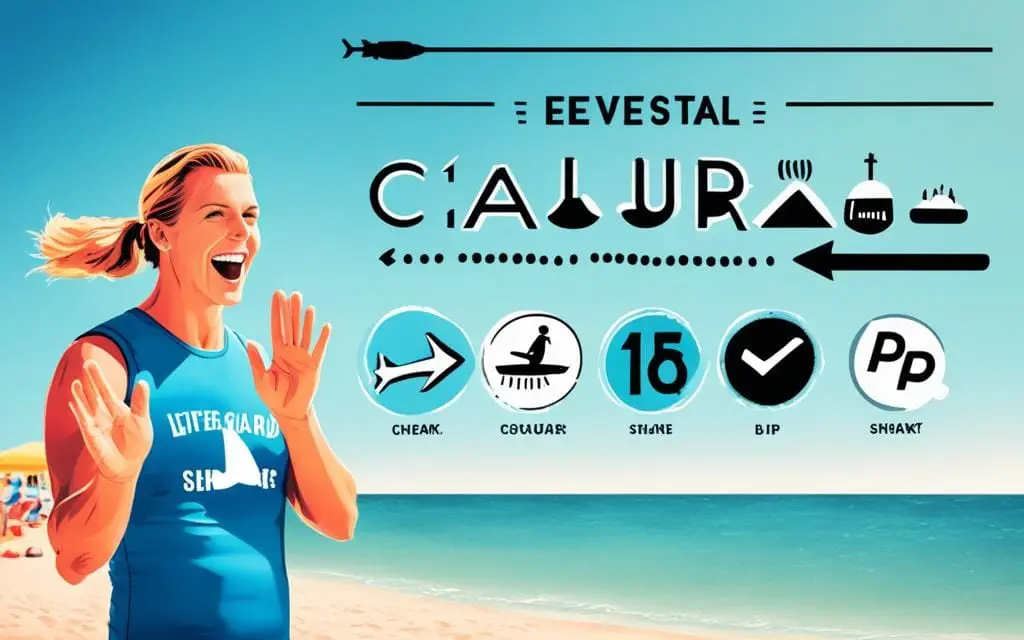
Respecting Beach Warnings and Advisories
It’s vital to follow all beach warnings and advisories to stay safe in the water. Watch for colored flags, read signs, and listen to lifeguards. Ignoring these safety steps can be dangerous for everyone.
Staying Safe in the Water
To keep you and your loved ones safe in the water, respect beach warnings and advisories. The warning flag system tells us about sea conditions, like rip currents or big waves. Understand these warnings to know when and where the water is safe to swim.
Obey Instructions from Authorities
Listen to lifeguards and other officials, not just the flags. They look out for us by sharing advice and warnings. This helps us stay out of trouble and have a great time at the beach.
Beach Conditions and Surf Forecasting
It’s vital to know the current and forecasted beach and surf conditions before visiting. Being aware of weather, wave heights, and surf advisories helps us make smart choices. This means knowing when it’s safe to go and how to get ready.
Monitoring Weather and Wave Reports
Checking updated weather and wave forecasts is crucial. It helps us grasp the beach’s present and future states. Details like wind speeds, rainfall, and wave heights affect our safety and enjoyment. Watching these factors closely prepares us for any risks or surf changes.
Planning Your Beach Visit Accordingly
With the latest on beach and surf conditions, we can plan better. For instance, if there’s a warning for high surf or strong currents, we might delay our beach day. But, when the outlook is sunny and waves are safe, we’re good to go. This way, we enjoy our beach time, staying safe from potential problems.
Keeping up with information and smart planning make beach visits great. We stay safe and have fun, even with the beach’s constant changes. Being alert and ready for any surf changes ensures a positive visit.
Beach Safety Tips for Families
At the beach, families must pay extra attention to safety, especially for kids. A few simple safety steps can make sure everyone has a great, safe time.
Supervising Children at All Times
Keeping an eye on the kids is crucial for beach safety. Never let little ones play in the water alone. They could get caught in dangerous currents. An adult should closely watch kids in the water, staying within arm’s reach.
Teaching Kids About Beach Flags
Talking to kids about beach flag meanings is very important. They need to know what each colored flag stands for. This helps them understand when it’s safe to swim. Following the flags and lifeguards’ advice can prevent dangerous situations.
Promoting Beach Safety Awareness
Keeping beachgoers safe is very important. It’s key to lower accidents and deaths at the seaside. Local groups and governments need to help spread the message about beach safety. They can do this through education and other programs.
Community Outreach Programs
Talking to communities is a great step for beach safety. This includes working with schools, centers, and local groups. The aim is to teach people about staying safe at the beach. This involves how to understand warning flags and avoiding risky water activities. By reaching out, we can help everyone stay safe during beach trips.
Social Media Campaigns
Using social media is a smart way to get the message out. We can run campaigns online to talk about beach dangers. This includes rip currents and high waves. We’ll also stress the need to follow lifeguard advice. By posting tips and updates, we can inform many people. This way, we help make beach days safer.
Conclusion
It’s important to know what a black flag at the beach means. This flag is part of a warning system that helps keep people safe. By understanding what the different flags stand for, we can stay out of danger at the beach.
This article looked at the meaning of beach warning flags and why they are important. We saw how a black flag warns about very dangerous conditions. We also talked about the risks at the beach and the lifeguards’ key role in keeping us safe.
To stay safe and have fun at the beach, it’s important to pay attention to the warnings. Always watch out and listen to the lifeguards. They’re there to help make sure everyone has a good time safely.
FAQ
What does a black flag mean at the beach?
The black flag is a serious warning at the beach. It means the water is extremely dangerous, so no swimming is allowed. This flag is raised when there are severe conditions, like big powerful waves or dangerous rip currents.
It also warns about severe weather, like thunderstorms. These conditions can put swimmers’ lives at risk.
Why is beach safety so crucial?
Knowing about beach flags is key for safe water fun. The flag system shows the current risks in the sea. Going in the water when it’s dangerous can cause harm or worse.
What are the different colored beach warning flags and their meanings?
Beaches use specific flags to signal safety levels.
– Green flag means calm waters and low risks.
– Yellow flag warns of moderate dangers.
– A red flag shows high risks, suggesting not to swim.
– Two red flags mean the water is off-limits due to extreme hazards.
What are some common beach hazards?
Beach hazards include rip currents and strong undertows. They can pull swimmers out or under. Risks go up with high surf and heavy winds, making swimming tough.
How do lifeguards communicate with beachgoers?
Lifeguards have ways to talk to people and each other. They use hand signals, whistles, and flags. These show if the water’s safe and if help is needed.
Why is it important to respect beach warnings and advisories?
Be sure to follow all beach safety signs and lifeguards’ advice. Ignoring them can be very risky, even life-threatening.
How can beachgoers stay informed about current and forecasted beach conditions?
Watch the news and surf reports to stay informed. Knowing the weather and waves help you plan for a safe trip. It’s about making smart choices before heading to the beach.
What are some important beach safety tips for families?
Safety is extra important for families, with kids at more risk. Watch the children, teach them about flags, and make sure everyone can swim. These steps keep your beach day fun and safe.
How can we promote better beach safety awareness?
Spreading the word about beach safety can save lives. Communities and groups can teach through events and online posts. Making sure everyone knows the risks helps prevent accidents.

